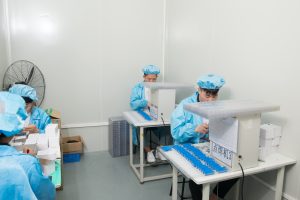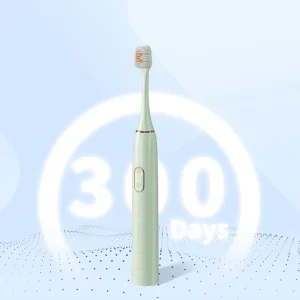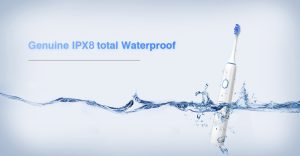Oral hygiene is a critical aspect of personal care, and flossing plays a key role in maintaining healthy teeth and gums. Traditionally, dental floss has been the go-to method for removing food particles and plaque between teeth. However, with technological advancements, water flossers have emerged as an innovative alternative. From a manufacturing perspective https://www.powsmart.com/, both water flosser dental floss have unique production processes, cost structures, and material requirements. In this blog, we will conduct a Water Flosser vs. Traditional Dental Floss comparison, analyzing their differences in design, functionality, and production challenges.
Traditional Dental Floss: Simplicity in Manufacturing
Material Composition and Production
Traditional dental floss is typically made from nylon or Teflon, coated with wax or fluoride for improved performance. The manufacturing process involves:
Extrusion and Stretching: Nylon or PTFE fibers are stretched to achieve the right thickness and durability.
Coating and Cutting: The floss is coated with wax, flavoring, or antibacterial agents and then cut into appropriate lengths.
Packaging: The floss is spooled and placed into plastic or cardboard containers with built-in cutters.
Manufacturing Advantages
Low production cost: Raw materials are inexpensive, and the production process is highly automated.
Compact design: Easy to store and transport.
Eco-friendliness: Many brands now offer biodegradable floss options, reducing plastic waste.
Limitations
Manual effort required: Users must guide the floss between teeth, which can be challenging.
Gum irritation risk: Improper technique can cause gum damage.
Water Flossers: Advanced Engineering and Production Complexity
Components and Production Process
Unlike simple string floss, water flossers are smart electronic devices that require precision engineering. The key manufacturing steps include:
Injection Molding: Plastic components such as water reservoirs, nozzles, and handles.
Motor and Pump Assembly: The core technology of a water flosser involves a high-speed pump that generates pulsating water streams.
Electronic Integration: Circuit boards and rechargeable batteries are for adjustable pressure settings.
Quality Control: Testing ensures water pressure consistency and product durability.
Manufacturing Advantages
Superior cleaning efficiency: Water flossers use pressurized water to clean deep between teeth and along the gum line.
User-friendly design: Easier to use, especially for individuals with braces or sensitive gums.
Customization: Various pressure settings and nozzle designs cater to different user needs.
Challenges in Production
Higher production cost: Multiple components and electronic parts increase manufacturing expenses.
Regulatory compliance: Water flossers must meet electrical and safety standards in different markets.
Bulkier design: Requires more packaging and storage space compared to traditional floss.


Water Flosser vs. Traditional Dental Floss: Manufacturing Cost and Market Trends
Cost Analysis
| Factor | Traditional Dental Floss | Water Flosser |
| Raw Material Cost | Low | High (Plastic, Electronics) |
| Production Complexity | Simple | Advanced (Multiple Components) |
| Retail Price | Low | High (Premium Pricing) |
| Durability | Single-use | Long-lasting (Rechargeable) |
Market Growth and Consumer Demand
With increasing awareness of oral health, the demand for water flossers is growing rapidly. The global market for water flossers is expected to expand significantly, driven by:
Technological advancements: Smart water flossers with app connectivity and AI-driven pressure adjustment.
Hygiene-conscious consumers: More people prefer touch-free, automated oral care solutions.
Professional endorsements: Dentists increasingly recommend water flossers for patients with orthodontic work or gum issues.
Sustainability Considerations in Manufacturing
As environmental concerns grow, both traditional floss and water flossers are being redesigned with sustainability in mind:
Eco-friendly floss materials: Biodegradable silk floss and reusable floss handles are gaining popularity.
Sustainable water flosser production: Brands are focusing on recyclable plastics and energy-efficient designs to reduce environmental impact.
Reduced packaging waste: Both products are shifting toward minimal and recyclable packaging.
Conclusion: Which One is the Better Choice?
From a manufacturing perspective, both water flossers and traditional dental floss have distinct advantages and challenges:
Traditional floss remains a cost-effective and widely accessible option.
Water flossers offer superior cleaning and convenience but require more complex production and a higher retail price.
For manufacturers, the decision to produce either product depends on market demand, cost efficiency, and technological capabilities. As the oral care industry evolves, Powsmart anticipate continued innovation in both categories, ensuring consumers have access to the best oral hygiene solutions. https://www.powsmart.com/about-powsmart/


